IN today’s modern society, development, speed and growth is everything, so to live so close to a structure which has witnessed the change of centuries gone by is something special, and Launceston Castle certainly fits the bill.
Introduction
While today Launceston Castle stands to be enjoyed by aspiring historians, almost a millennia ago it served as a foundation for the town we know and love today. It also served as an icon, marking the victory and installation of King William I, or as he is better known, William the Conqueror.
And who better to cement and glorify the new King’s reign than one of his leading supporters?
Established by Count Brian of Brittany, the first post-conquest earl of Cornwall in around 1068, only a number of years after the infamous Battle of Hastings, Launceston Castle served as strategically important battlement, located to overlook the deep valley and crossing of the river Tamar.
This strategic stronghold would soon change hands, as William the Conqueror gifted not only the castle but the entire earldom to his half-brother Robert, the Count of Mortain. However, Robert wasn’t just William the Conqueror’s half-brother, he was considered the second most important man in England, meaning Launceston and Trematon, were the only two castles in Cornwall to be listed in the Domesday Book in 1086.
At this time, much of the settlement in the area was focused to the north at Lanstefan, however, in the final ten years before the 12th century, Lanstefan’s market was transferred to the outer bailey of the castle, marking the beginning of Launceston Castle’s prominence.
Though, as we know, all good things must come to an end and by this point King William had died and was replaced by his second son of the same name, William Rufus - known less for his conquering. However, William the Conqueror’s demise certainly didn’t mean the demise of Launceston Castle. Over the next few hundred years, Launceston Castle would go on to become one of the most important in all of England.

The Glory Years
The castle we know today originated in the late 11th century, it’s buildings and defences designed to prevent the sort of conquering William had achieved himself some 50 years prior.
While defences were initially constructed from timber, as time progressed, stone was used to bolster defence, constructing what is known as a ‘shell keep’. Despite sounding like a mystical fortress found in the depths of Atlantis, a shell keep is a stone fortification typical of the 12th and 13th centuries. These were made by constructing a circular wall around the top of a motte (mound) or ringwork, with buildings placed around the inside - not many were constructed across England and Wales, both because of their cost and because of the need for the motte to be sufficiently broad across the top to support the structure.
For Launceston Castle, the 13th century is a period it likes to tell its grandchildren about, a period of glory and prestige. With Henry III on the English throne, his younger brother, Richard of Cornwall was granted the earldom in 1227, and for Richard, Cornwall meant money! With tin mining bringing in the cash, Richard used the revenues he received from the industry to reconstruct the castle’s defences.
Launceston was to become a symbol and at the head of that was Launceston Castle, a statement on the Cornish nobility, designed to impress all who set their eyes on it. Complete with impressive defences, freshly rebuilt walls and gatehouses, it even had a deer park with its own tower to allow guests to get the best views of the animals inside.
By this point the town and the castle had grown to the extent that it was regarded as the natural place from which Cornwall should be administered, becoming the capital of Cornwall.
However, this period of prestige wasn’t to last long…
Hot Potato
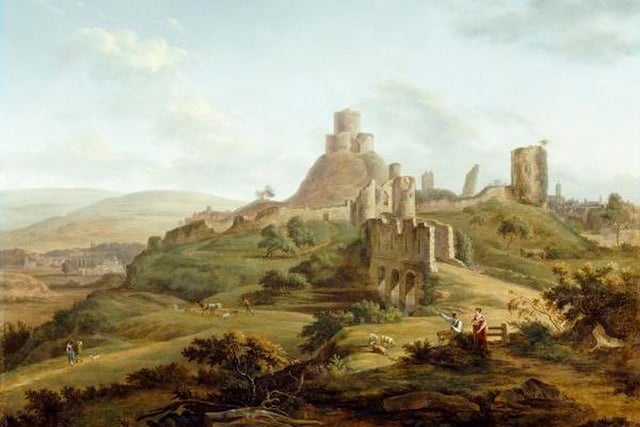
In 1272, Edmund, son of Richard I, inherited the earldom of Cornwall, moving the administrative hub to Lostwithiel to be closer to the tin mining industries and while Launceston Castle remained a site of local government, it soon was left neglected.
Following Edmund’s death in 1300, the fortress’s ownership returned to the crown, and thus, the game of hot potato began.
Edward II gave the earldom of Cornwall to his royal favourite Piers de Gaveston, while the job didn’t come with benefits such as a company car, it did include Launceston Castle.
However Gaveston’s rule didn’t last long, following his execution in 1312, the castle was once again passed on, this time to Walter de Bottreaux, though some 20 years later, Edward III’s son, Edward the Black Prince, was made first Duke of Cornwall at the ripe old age of six, and thus Launceston Castle was his.
By this point however, the castle wasn’t quite so glorious, it had enjoyed its youthful years but now, having become second best to other fortresses in the county, was looking a little sad. When Edward inherited the property, officials were sent to survey the castle and reported:
“There is a passage leading from the castle up to the High Tower, newly covered with lead, but whose steps are defective. And there are in the same tower two chambers whose doors and windows are of no value. And the aforesaid tower has two stone curtain walls, of which one portion containing by estimation three perches has fallen to the ground.”
The story was the same for much of the castle, the goal (jail) was “badly and inadequately covered with lead” and another prison called the “Larder”, “weak and almost useless”.
While under Edward, Launceston and other castles across Cornwall were repaired, however, Launceston Castle would never reach its former glory again, being used now primarily as a prison.
Bad Neighbours
By the late 15th and 16th century, the relationship between Cornwall and the English government was marked by successive rebellions, resulting in oppressive responses. But what did this mean for Launceston Castle?
In short, it became a haven for pro-English duties, acting as the setting for the trial, imprisonment and execution of Cornish rebels. In 1577 the Roman Catholic priest Cuthbert Mayne was held in the castle, and after his brutal execution in the town’s market-place his head was displayed over the castle gate. It is believed that for this reason, Launceston Castle was given the nickname ‘Castle Terrible’, which was recorded by the Cornish antiquary Richard Carew in the early 17th century.
In 1656, George Fox, founder of the Society of Friends (Quakers), was arrested for having long hair. For this and the offence of not removing his hat in court, he was held in Launceston Castle, describing his experience, he gives some insight into the conditions of what he called ‘Doomsdale’.
“The place was so noisome that it was observed few that went in did ever come out again in health. There was no house of office [latrine] in it, and the excrement of the prisoners that from time to time had been put there had not been carried out (as we were told) for many years. So that it was all like mire, and in some places to the tops of the shoes in water and urine …” He wrote.
“At night some friendly people of the town brought us a candle and a little straw, and we burned a little of our straw to take away the stink. The thieves lay over our heads, and the head jailer in a room by them. … It seems the smoke went up into the room where the jailer lay; which put him into such a rage that he took the pots of excrement from the thieves and poured them through a hole upon our heads in Doomsdale, till we were so bespattered that we could not touch ourselves nor one another.”
“Like Lanson gaol”
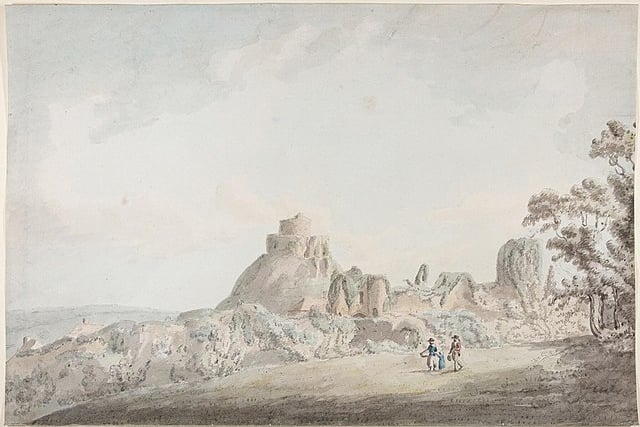
As time progressed, the castle strayed further from the glorious symbol it had once been. Engravings from 1734 show the castle walls and towers laden with gaps and overgrown vegetation. The infamous jail had also been downsized to only a small prison-house.
By the 1760’s mayor of Launceston, Coryndon Carpenter, aided the speed of the castle’s ruin by demolishing the upper storey of the north gatehouse and part of the north curtain wall, in order to make room for a new home and garden for himself, Eagle House, which of course is still standing.
It was decided in the late 18th century that the small prison would not do and as such it was extended, adding extra cells and an exercise yard. But despite the shiny new extension and refit, those staying at this hotel called ‘prison’ described awful conditions, eventually prompting a local saying “Like Lanson gaol”, meaning something squalid and disorderly.
Finally, in the 1840’s nearly 800 years of the castle serving as the primary prison for Cornwall came to and end as the prison closed and the role moved to Bodmin. The prison was demolished and the castle courtyard landscaped.
The Castle Today
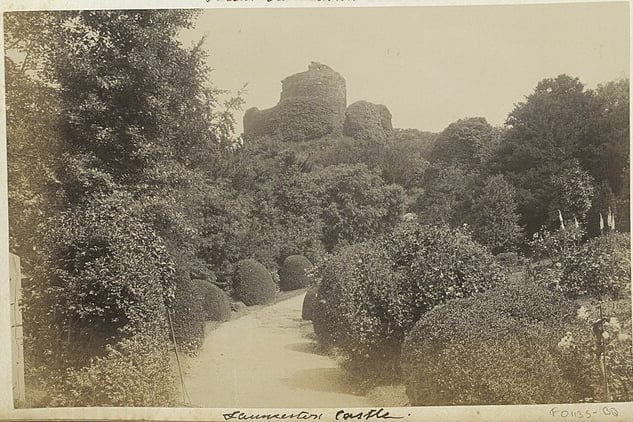
The Second World War saw Launceston Castle pushed into official use one last time. The western half of the bailey became a temporary hospital for the US military, who were assembling in Cornwall in preparation for the D-Day landings.
The hospital buildings remained in use by local government officials after the war, and survived until the 1960s. But from 1951 the castle was in the guardianship of the Ministry of Works, and since 1984 it has been managed by English Heritage.
Today, the tower and its surroundings sit as an icon of the area, welcoming visitors to marvel at this snapshot of history. Sat perched on the hill, Launceston Castle has watched as times change and people come and go. It remains a reminder of the impermanence of now, that all things shall pass, good or bad, the sun will rise tomorrow and the day after, and even a thousand years from now.


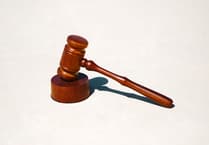
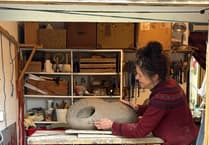
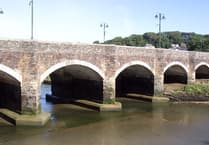
Comments
This article has no comments yet. Be the first to leave a comment.